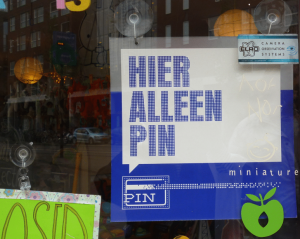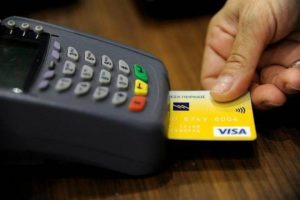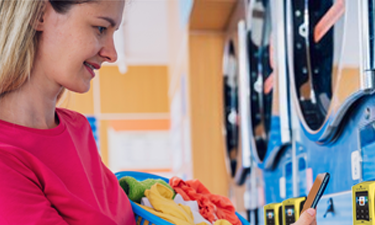Throughout the years, as a society our relationship with money had evolved many times over. There was a time that cash was gold and money was considered a passport to freedom. But with each new generation we’ve evolved into a more cashless society. As credit cards began replacing cash, a new realm of cashless possibilities opened for businesses and individual consumers. And with each passing day cashless systems continue to evolve with the development of new payment applications. Of course, cashless payment solutions are not exclusively limited to credit cards. The overall picture of a cashless system includes many electronic methods. In America alone, there are numerous popular apps, from PayPal, to Venmo, to the Starbucks app, and Apple Pay (which, according to Statista, boasts 383 million users worldwide). There are also self-service solutions that dramatically open new possibilities for this industry. One of the leaders in this cashless payment industry is Nayax. Known predominantly for its cashless payment solutions amongst the self-service industry, has redefined the way these companies conduct business. Once limited by cash-only payments, the self-service industry can allow consumers to enjoy their services in a cashless way. 
Here are the top 17 ways the global economy is steering us toward a cashless world:
1. Cashless Solutions Across the World

2. Cashless Netherlands

3. Cashless Sweden

Minimizing Paper Money Production
Riksbanken, Sweden’s central bank, predicted that between 2012 and 2020, circulation of paper money would wane by up to 50%, yet another indicator that Sweden is moving in a cashless direction.
Microchip Payment Solutions
The official website of Sweden also states that out of every five purchases made in Sweden, four are bought using cashless electronic systems. Not only this, but a recent awe-inspiring development is that not long ago Swedes began to implant a microchip that enabled them to make purchases with just a thrust of the wrist. As of 2018, more than 4,000 Swedes had enthusiastically agreed to have a chip implanted. Who’s to say how long it will be before this new technology becomes internationally accepted? These cutting-edge developments make it clear, that although Sweden is not yet considered a cashless country, it is closely approaching this title, and will perhaps become one of the first cashless countries in existence.
4. Cashless India

The Digital India Program
According to the Indian government website, the Digital India Program’s motto is, “Faceless, paperless, cashless,” a sure sign that India wishes to lead the way in the modern cashless economy. From credit cards, to AEPS, to a mobile wallet system, a tool that easily enables cash transactions via phones and other electronic devices, India is working hard to stand at the forefront of the cashless revolution, and to empower its people in ever-changing times.
5. Cashless South Africa
In South Africa, people are searching for cashless solutions, as is also true with many other African countries. Thus far, mobile phone transactions have been a helpful tool for many South Africans, as they are safe, fast, and effective. Affordable mobile phones are easily accessible in South Africa, and a system of mobile transactions is this country’s primary access into a cashless economy.
Cashless Transactions Via Mobile Phones

6. Cashless Schools
More and more grade schools are choosing to go cashless, and parents are increasingly advocating for this option. 
7. Cashless Tolls
Toll systems are another organization amongst the list of early adapters to make the change from accepting bills and change to shifting toward a cashless system. Cashless tolls were created as a way to reduce traffic congestion, and to minimize avoidable toll tickets, while also making roads, bridges, and tunnels safer for motorists. In America, cashless tolling is becoming increasingly popular, and one of the primary digital tolling devices, known as the E-ZPass, is used in at least 16 states. 
8. What Do the Critics Say?
With all of these developments it beg an obvious question. If our world is headed towards a cashless future, then what will happen to human connections and interaction and how will they be effected?
9. The Value of Touch
People are searching for new ways to feel connected, and there is a question as to whether the cashless economy will provide new and interesting ways of communicating, or perhaps even free up more time for people to spend together. Gone are the days where paying your bills required you to speak to a company representative. Nearly our entire world has become automated, be it bank deposits or ordering takeout delivery. But with a world moving away from in-person connection, perhaps this will leave more time for each other. Will contactless, cashless companies look to developing new inventions to elicit that same sense of connection? Perhaps new means of expressing VIP status will also be established, such as in the early days of credit cards, and there will be exciting new tools for rewarding distinguished clientele, and for merchants to make inter-personal contact with their customers.
10. Will a Cashless World Exclude the Disenfranchised?

Prepaid Cards to Help the Poor
It is essential that governments take all demographics into consideration, providing solutions where needed, as is the way in successful societies such as Sweden, where homeless people are being given prepaid cards so that they can have equal access to basic amenities. If our world is to become more cashless, then those who are in a low-income bracket will need access to bank accounts, and the assurance that bank branches will not be removed from poorer areas. Such examples of thoughtful economic inclusion demonstrate how a society that helps its people is more likely to be successful on the whole.
Electronic Inclusiveness
In order to truly establish a cashless society, there must be a cultural shift in which universal access to the Internet becomes a basic human right. Many countries would like to establish more cashless systems, enabling them to join the global economy on another level, but if their citizens do not have equal access to mobile systems, then there will never be a chance for total transformation, what some refer to as a “movement” into a cashless economy. For multiple countries, widespread Internet access will be necessary in order for these major cultural shifts to take place. If this large-scale change is to happen effectively, then all must be welcome, and everybody included. Of course there are some challenges to be expected, but the ease of entering a cashless world will likely make these transitions worthwhile.
11. What about Millennials and Generation-Z Consumers?

12. Closing the Age Gap

13. The Cost of Cash
There is an expression that states that it costs more to make a penny than a penny is actually worth. Well, producing just one penny costs 1.5 cents, deeming the entire process far from cost effective. It may sound strange to hear that there is a cost associated with the upkeep of cash stockpiles, but depending on the country and the system, such overhead does exist.
Reducing Maintenance and Production Costs

14. A Better Security Method
Of course there are also some fears and pitfalls associated with living in a world increasingly dominated by credit cards, but more and more it seems that the positives outweigh the negatives. One large deterrent for consumers is credit card debt. There are those who view a credit card as a passport to freedom with no concrete economic consequences (temporarily forgetting that behind that plastic card there is real money that must be managed), or who unknowingly choose a card with a high interest rate, causing unmanageable debt to accrue. With that said, though credit card debt can become a trap for some, generally speaking, credit cards are a great asset to our modern economy. Credit cards can also serve as a lifeline for young and inexperienced consumers, enabling them to have access to a system of lending that would otherwise exclude them, such as bank loans that are inaccessible to those who have yet to build a line of credit.
How Cashless Payments Have Improved
Another major deterrent when it comes to using cashless payment methods, is the possibility for fraud and identity theft. This issue falls both on the side of consumers, as well as with businesses, and yet constant systemic improvements are being made to help prevent these pitfalls from happening. An advantage that credit cards have over bills is that they can also protect your money. When it comes to credit cards, one is not penalized, whereas with instances of cash theft, the victim is left completely powerless. Once cash is gone, it is irretrievable, whereas with credit cards, there are still many options for reimbursement. Ever since EMV chips containing encrypted information replaced magnetic strips, credit card transactions have become infinitely more secure. In fact, EMV chips are now so preferred, that in the event that there could be fraud, merchants can actually be held accountable by banks if a business makes a transaction using a strip on a non-EMV device.
15. How COVID-19 Has Impacted Cashless Payments

16. Cashless Options, the Benefits of Online Shopping

17. Conclusion
It may be have once been a futuristic dream, a vision of a world where one need only carry a small chip or card in order to gain access to every store and entertainment venue in sight, but a cashless economy is quickly becoming our reality. From hotels to stores, to restaurants, to sites of big-ticket purchases, as developments in cashless systems progress, so will our access to new ways of doing business, and to another kind of freedom. A contemporary cashless economy will bring access to a newfound convenience, coupled with a more sophisticated system of security, advantages that are all the more reassuring in these most precarious of times. No matter the size of your company or organization, now is the perfect time to make the shift toward a cashless economy. For those in the self-service industry, the available options for taking a step towards offering cashless solutions can be quite simple. Reach out and speak to a representative at Nayax to learn how your company can offer cashless payment solutions.




